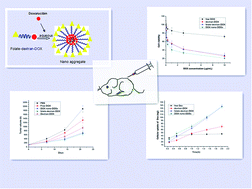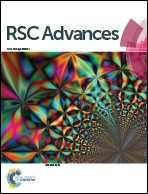Self-organized nanoparticle drug delivery systems from a folate-targeted dextran–doxorubicin conjugate loaded with doxorubicin against multidrug resistance
Abstract
A folate-targeted dextran–doxorubicin conjugate (folate–dextran–DOX) for drug delivery systems (DDSs) was synthesized by grafting DOX onto dextran through cleavable hydrazone bonds and a pH-sensitive spacer for controlling the drug release. Folate was coupled onto dextran as an ideal ligand for targeting hepatocytes. The conjugate was formulated into nanoparticles with excessive deprotonated DOX (DOX nano-DDSs) under aqueous conditions, which exhibited nanoparticles with larger size of 147.9 nm in diameter and improved drug entrapment to the level of 25.2%. DOX nano-DDSs delivered higher cytotoxicity and a greater extent of intracellular uptake in vitro against drug resistant HepG2 (HepG2/DOX) cells; moreover, they displayed equivalent effects with folate–dextran–DOX micelles in terms of inhibiting tumor volume and decreasing toxicity. In addition, DOX nano-DDSs achieved significantly greater effects than free DOX. The results indicated that these targeted self-organized DOX nano-DDSs have superior reversal efficacy to free DOX and serve as a highly promising nano-platform for future cancer therapy.


 Please wait while we load your content...
Please wait while we load your content...